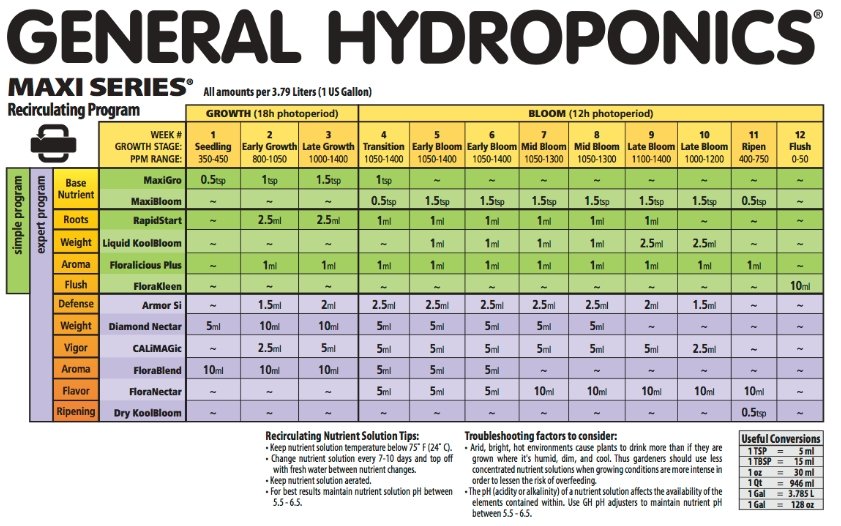- No product in the cart.
PPM Levels for Cannabis Plants
PPM Levels for Cannabis Plants
PPM (Parts per Million) levels is the measure of nutrients in the water used to feed your cannabis plants. There are minerals in the tap water you will use to water your plants and you will be adding some fertilizer solutions to the water which also can be measured in parts per million.
PPM is a fairly simple concept to understand, however getting the right balancing acts between PPM and pH can be a tricky endeavor.
How small is one PPM?
Think of a 1000 x 1000 pixel solid grey image. Now imagine if 1 pixel was silver. That is 1 silver pixel among 999,999 grey pixels. That one silver pixel is 1 PPM.
In terms of water, 1 PPM is 1millileter in 1000 liters of water. 1000 liters of water contains 1,000,000 milliliters. One milliliter is roughly 20 drops of water, or 0.05 ml. That means there is roughly 20,000 drops of water in a liter.
During mid flowering stage, cannabis plants like a PPM around 1000. This makes the match simple. If 1 PPM is 1ml per 1000 liters, a PPM of 1000 means 1ml per 1 liter. So there you have it. At mid flowering about 1 ml of a 1 liter watering can of water is nutrients. The other 999 ml is water.
Related Articles:
pH & PPM
pH performs an enormous role in PPM concentrations. PPM can be spot on but if pH is off, PPM is rendered meaningless because the plants can’t absorb the nutrients they need. Cannabis crops carry nutrients through their stems, like all leafy crops. Roots are porous structures which extracting nutrients and water from the soil. The water and nutrients are then used by the plant to generate meals by photosynthesis. These meals affect all the structural elements of the cannabis plants from leaves to flowers to cannabinoids.
Like humans, plants can only feed so much each day. If they are overfed the plant can be harms by too much of a particular element, the roots lock up and the plant staves while surrounded by food.
It’s here that PPM comes in. Throughout a plant’s lifetime, cannabis plants have distinct nutritional needs. There is an optimal level of PPM for each phase of development. The use of a TDS or EC meter to measure PPM is a precise way of ensuring that your plants receive exactly the right amount of nutrients and preventing them from soaking up too much of the wrong material.
Adjusting PPM and pH is something that can be tricky. As you adjust one, the other will go out of whack. As a rule of thumb, it is more important for pH levels to be correct than PPM levels. So if you are getting frustrated trying to dial both in, settle for pH being exact and PPM being slightly off.
For example, let’s assume the plant is in late vegetative stage. You probably want a PPM around 600. You definitely want a pH between 5.8 – 6.3 (Lower for hydro, higher for soil). If you get a mix that has an 800 PPM and a pH of 6.0, that is fine. However if you get a PPM of 600 and a pH of 5.3 you are on the borderline of poisoning the plant.
Here is a list of suggested PPM levels for the different stages of a cannabis plant.
PPM Levels for Cannabis Chart
Seedlings Stage: 100-400
Nutrients aren’t really needed during seedling stage. A little Root Juice is always helpful.
Early Vegetative Stage: 500-800
This includes clones. Nitrogen is the key nutrient at this stage.
Late Vegetative Stage: 800-1200
Plants require a mice mix of N-P-K. Mixing a grow/veg solution and a flowering/bloom solution is a good way to get the balanced N-P-K you want at the end of vegetative stage.
Early Flowering Stage: 1000-1400
The cannabis plant will stretch at this point. The need for Nitrogen begins to decrease while the need for Phosphorus start to increase.
Mid Flowering Stage: 1200-1600
This is the stage when a cannabis plant needs the most food. Maintaining moderate levels of Nitrogen, while boosting Phosphorus & Potassium to boost flower growth.
Late Flowering: 1000 – 500 – 0
Late flowering starts with a decrease in PPM. During the ripening week, PPM may be around 500. Finally PPM is dropped to zero. This is the flush. Plants get fed only water to flush their systems of all the chemicals. This flush improves the taste and decreases the harshness.

Now that you understand PPM and how it interacts with pH, you should be better equipped to maintain and adjust the feed for your cannabis plants. Investing in a pH and TDS meter will make the process much simpler. Soon you will be providing the perfect feed your cannabis plants want and you’ll be rewarded with hearty and potent harvests.

